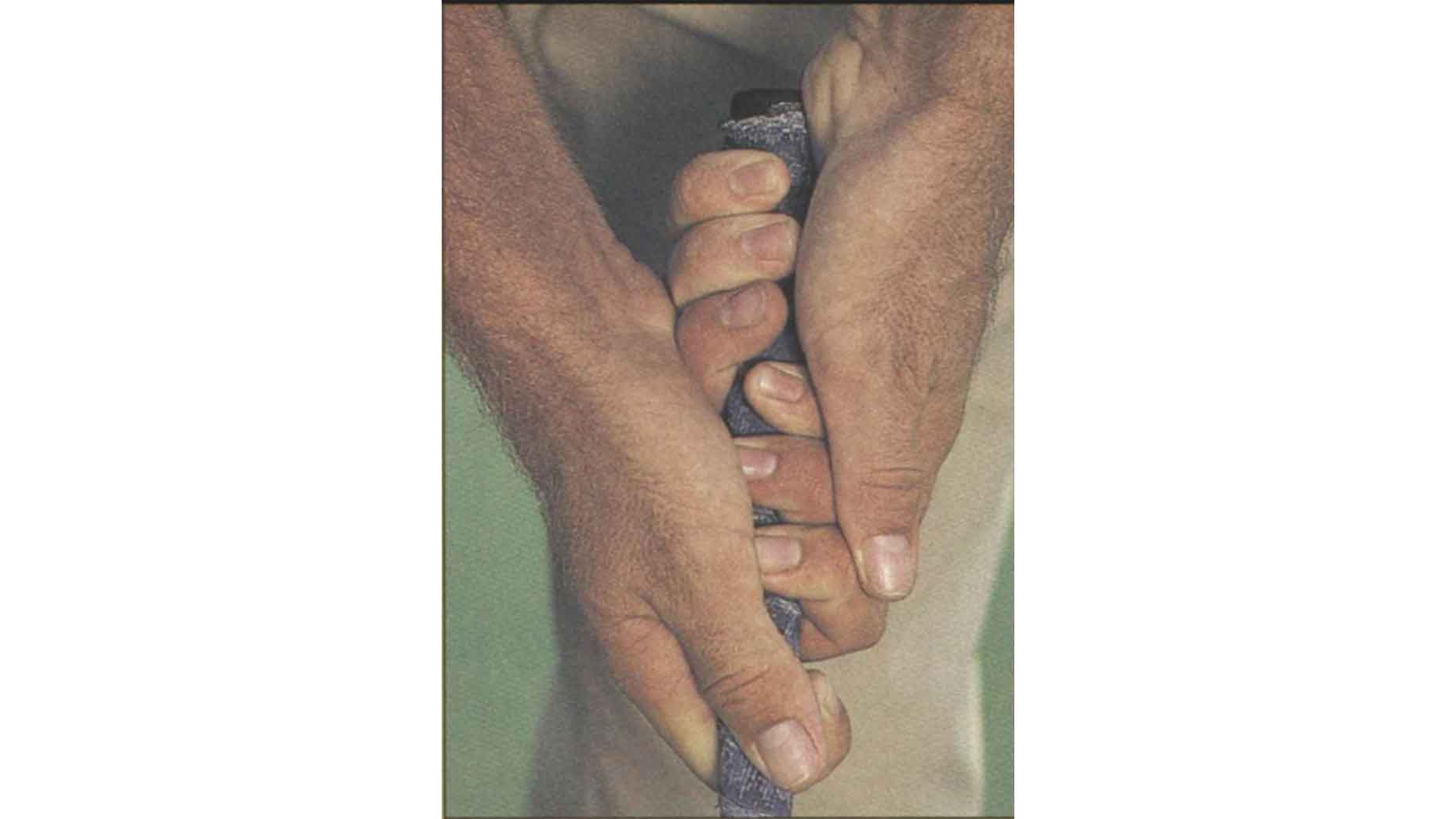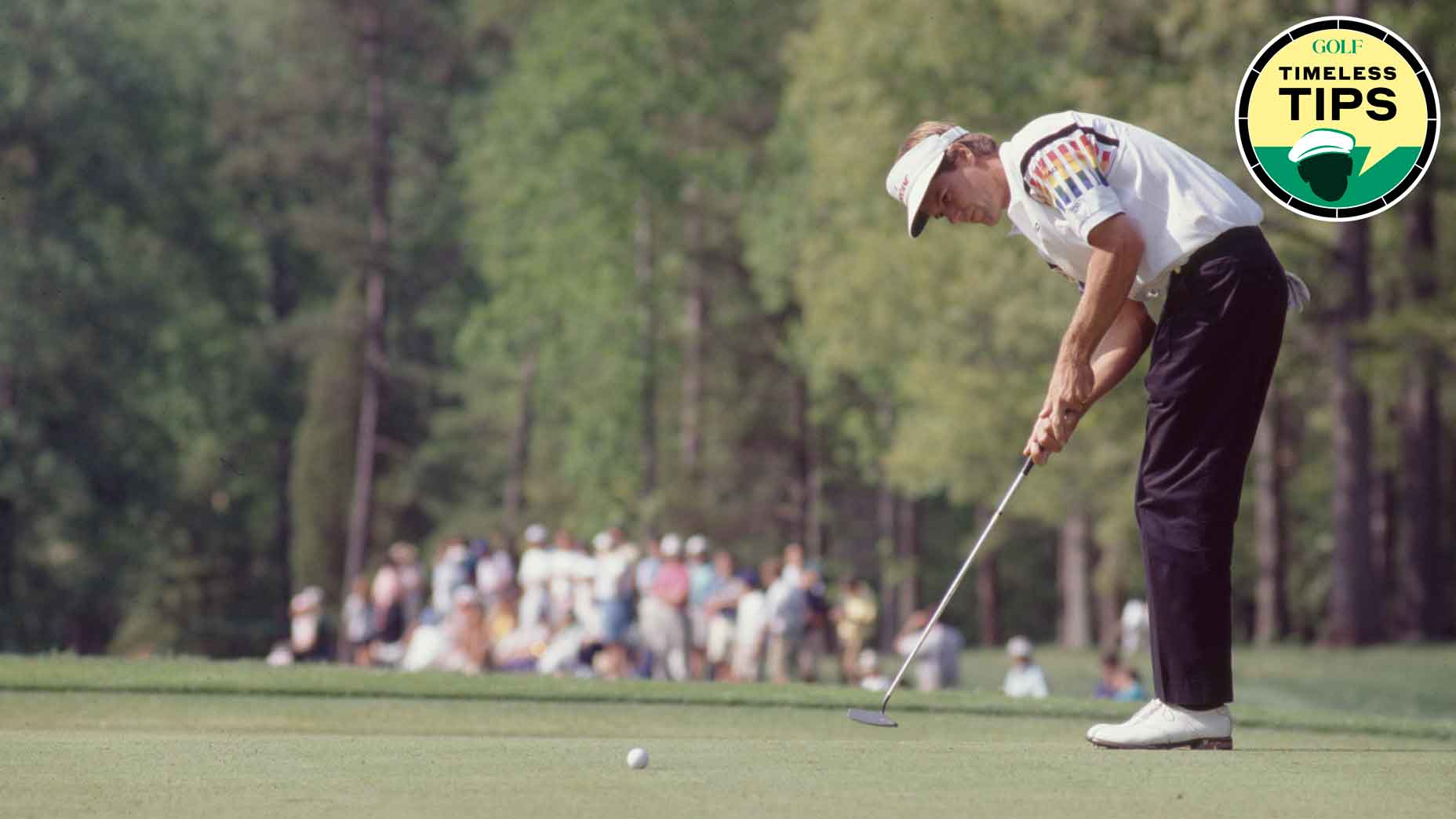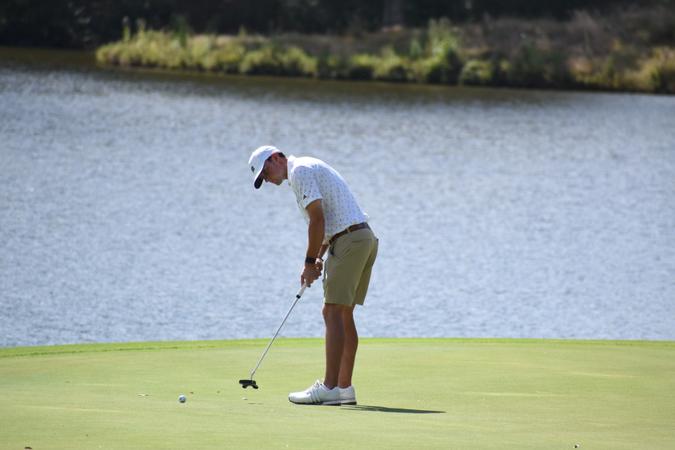Golf instruction is ever-evolving, but the best advice stands the test of time. In GOLF.com’s new series, Timeless Tips, we’re highlighting some of the greatest advice teachers and players have dispensed in the pages of GOLF Magazine. Today we look back to our December 1988 issue for a putting tip from Paul Azinger.
Putting can be a maddening skill to struggle with. Although it typically constitutes the shortest strokes, mastering your touch on the greens can at times feel impossible. Even the pros have difficulty with it from time to time.
One such example? Twelve-time PGA Tour winner Paul Azinger. In the mid-1980s, Zinger had yet to win on Tour and ranked outside the top 100 in putting. So, he turned to fellow pro Corey Pavin for some help.
What Pavin shared with Azinger was an unconventional putting grip and technique to use on the greens. And although it looked a little funky, it was highly effective. After putting the grip in play, he started stacking up wins, culminating in a major victory at the 1993 PGA Championship.
In the midst of Azinger’s putting resurgence, he joined GOLF Magazine to show our readers how the funky technique worked — and how they could implement it into their own games. Check it out below.
Azinger’s unique putting technique
This is my putting grip [below]. Pretty strange looking, right? It may look weird, but it works. When I picked it up from fellow Tour pro Corey Pavin late in 1985, I ranked 134th on the list of putting leaders; this year, I rank fourth.
I recommend this grip, especially if you think your putting stroke is too wristy or if you want the putter to feel like an extension of the left arm.
First I’ll explain how to take the grip. As you practice it, read on: I also have some unorthodox thoughts on the stroke and a strategy for holing more putts that differs from most pros’.

Paul Azinger’s putting grip.
GOLF Magazine
To take the grip, place your left hand on the club in a very weak position, the palm almost under the handle. The right hand goes on very strong, also underneath, so the fleshy heel of the hand covers the left middle and ring fingers. Extend the left index finger over the back of the right hand so the tip lies between the two middle knuckles. Be sure the left thumb falls over the right fingers, not on the shaft.
The main advantage of this grip is that it stabilizes the left wrist so the left arm and putter shaft work as one. With the wrist locked, neither hand dominates the action. This keeps the putterface square to the target line as you draw the club back and swing through.
But the grip isn’t all I do differently. I like to “zing” the ball with a short rap, not a long, flowing swing. I never worry about how long to make a backswing. Instead, I stand over the ball and imagine the line I want to roll the ball on running away from the front of the ball, then I “pop” it along that line. I make sure to follow through toward the hole, and I hold my finish position — the blade up and away — instead of recoiling.
My stroke may be firm, but I’m not an aggressive putter, that is, I don’t try to bang the ball home by bouncing it off the back of the cup. To do that, you must roll it right over the center of the hole, and if you’re off by just a little, the ball will most likely lip out. I stroke softly enough so that if the ball doesn’t catch the hole dead-center, it still has a chance of catching the lip and dropping in.
Charging the hole has another drawback: A long second putt. If you miss an aggressive putt, you’ll probably face a three or four footer coming back. When my soft putts miss, I have only an eight to 10 incher to negotiate. If my second putt is longer than that, I feel I’ve hit it too hard. My feeling is that if I miss my birdie, I prefer to have an easy tap-in left instead of a missable three footer to grind on. I would rather have a “gimme” par putt than risk a three-putt bogey.
My plans change slightly on long putts. With 40 or more feet to cover, I try to get the ball within a two-foot-wide bucket around the hole. And while I normally don’t like to leave the ball short of the hole, I don’t mind a long one finishing a little shy, so long as ’m left with nothing more than a two-footer for my second putt.
A case sometimes made against rolling the ball softly on short, pressure putts is that it’s more reliable when you’re nervous to make the firmest stroke possible and bang the ball into the back of the cup. I don’t buy that argument because you still have to hit the hole squarely to make the ball drop. I still prefer to make a soft approach even on the most crucial putts, thanks to a pre-shot routine I’ve developed to calm my nerves. I control my breathing: I inhale to a slow, leisurely count of four, then exhale to a count of four. If you’ve ever watched me walking up the fairway to face a pressure putt, you can be sure I’m doing this, and that I continue to do it while I prepare for the stroke.
This routine calms my pounding heart, which helps me avoid making any nervous, jerky motions that could interfere with the stroke. The routine also gives me something to think about as I get ready, helping take my mind off the pressure of having to make the putt.
“>







